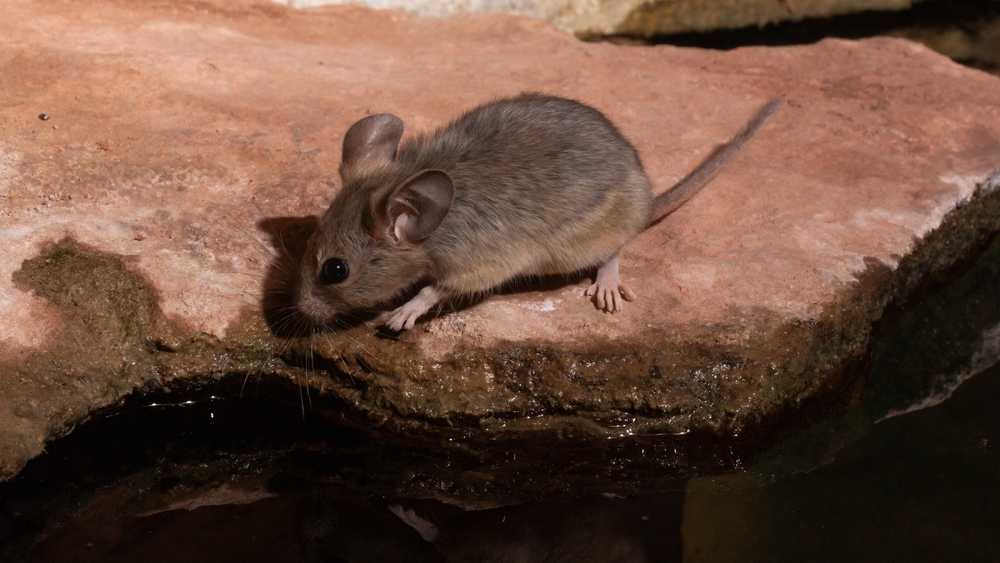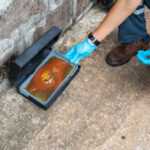Pack Rats 101: Facts, Signs, & Prevention Tips
What is a pack rat and why do they invade homes? Learn key facts, nesting habits, and simple control tips to keep these rodents away safely.
What Is a Pack Rat? Facts, Identification, and Control Tips
Wondering what a pack rat is? A pack rat, also known as a wood rat, is a rodent known for collecting shiny objects. These creatures, with their bushy tails and large ears, measure about 12 to 18 inches long. Read on to learn more about pack rat characteristics, behavior, and how to manage them.
- Pack rats, known for their distinctive physical traits and hoarding behavior, build organized nests that signify their resourcefulness and adaptability in various habitats.
- Pack rats pose health risks through the transmission of diseases such as Hantavirus and can cause significant property damage by gnawing on electrical wiring and compromising insulation.
- Preventing pack rat infestations involves sealing entry points, maintaining cleanliness around the home, and considering professional pest control services for effective management.
Understanding Pack Rats
Pack rats, also known as wood rats, are fascinating creatures with distinctive features that set them apart from other rodents. These animals typically grow to about 12 to 18 inches in length and weigh between 7 to 21 ounces. They have large ears, bushy tails, and big dark eyes that give them a somewhat endearing appearance. Their fur is usually brownish-grey with a lighter-colored underbelly.
What truly sets pack rats apart from other rats is their behavior. They are notorious for hoarding shiny objects, such as coins and keys, which they incorporate into their elaborate nests. Their nests often comprise various materials such as twigs, leaves, and other debris. This hoarding habit not only makes them unique but also reveals their resourcefulness in adapting to their surroundings.
Unlike other rats and mice, pack rats build highly organized nests with separate areas for resting and latrines. Their nests are well-structured homes, providing shelter and storage for their hoarded items, rather than random piles of debris. This behavior, along with their physical traits, makes pack rats a unique and intriguing subject of study.
Habitat and Distribution
Pack rats are incredibly adaptable and can thrive in a wide range of environments. From the dry deserts of western North America to mountainous regions and even urban areas, these rodents have a remarkable ability to survive in diverse habitats. Their resilience is evident in their ability to inhabit forests, grasslands, rocky crevices, and human structures.
Preferred habitats offer both shelter and food sources, crucial for their survival. Forests and grasslands offer ample plant material for food, while rocky crevices and human structures provide necessary shelter. Such adaptability allows pack rats to occupy a wide ecological range, making them common in various regions.
Pack rats are excellent climbers, which enables them to access high places like attics and ledges. This climbing ability, combined with their need for shelter and food, explains why they are often found in human dwellings. Knowing their habitat preferences and distribution allows homeowners to better anticipate and prevent pack rat infestations.
Diet and Feeding Habits
Pack rats primarily eat vegetation, seeds, and nuts. Their diet also includes fruits. They are known to consume a variety of plant materials, including leaves and twigs. Some pack rats have a particular fondness for juniper twigs, which form a significant part of their diet in certain regions.
Inside human dwellings, pack rats exhibit opportunistic feeding habits, readily consuming stored cereals, grains, and pet food. This opportunistic feeding behavior can lead to significant food contamination, as pack rats often leave behind droppings and urine. Their habit of hoards food for later consumption is another characteristic that helps them survive in various environments.
The presence of pack rat droppings and urine is a clear indication of their feeding activity and can help homeowners identify an infestation. Understanding their diet and feeding habits helps homeowners secure food sources and prevent pack rats from entering their homes.
Nesting and Reproduction
Pack rats are known for building large, multi-layer nests that often contain a mix of natural and discarded materials. These nests are typically found in sheltered locations, such as attics, crawl spaces, and rocky crevices. The ability to build nests from diverse materials demonstrates their ingenuity and adaptability.
The structure of a pack rat nest is quite complex, with a main area for resting and a separate latrine area. The nests are often made up of plant fragments, animal dung, and small rocks, creating a debris pile that provides both shelter and storage. This careful organization within their nests is a testament to their resourcefulness.
Pack rats have a relatively short gestation period of about a month, and females typically produce litters in the spring. The average litter consists of two or three young, which are weaned after a nursing period of four weeks. This rapid reproduction rate can lead to quick population growth, making it essential to address any infestations promptly.
Signs of a Pack Rat Infestation
Identifying a pack rat infestation early can prevent significant damage to your home. Common signs include the presence of nests, droppings, and missing shiny objects. Pack rats are known to hoard shiny things, so if you notice items like coins and keys disappearing, it could be a sign of their activity.
Before:
Additional indicators of a pack rat infestation include chewed wood and greasy rub marks along baseboards and walls. Tracks or footprints in dust around your home may also reveal pack rat movement, especially in crawl spaces and under cabinets. Listening for vocal sounds from attic vents or walls can also suggest their presence, as pack rats can be quite vocal.
These signs can suggest the presence of pack rats in your home.
Regular inspections help catch infestations early and prevent extensive damage. Homeowners should look for signs such as trampled grass trails, gnaw marks, and live or dead pack rats. Staying vigilant allows you to address a small infestation before it becomes a larger problem.
Dangers and Damage
Pack rats pose several dangers to both health and property. They can carry parasites and diseases, including Hantavirus, which can be transmitted to humans. Their droppings, urine, and saliva can contaminate food and surfaces, leading to unsanitary conditions in the home.
In addition to health risks, pack rats can cause significant structural damage. They are known to gnaw on electrical wiring, which can create fire hazards. Their nesting materials can also compromise insulation and wooden structures, leading to costly repairs.
The contamination caused by pack rat droppings and urine can result in unpleasant odors and unsanitary conditions. Homeowners should pay special attention to these signs and take immediate action to rid their homes of these pests. Protecting your home from pack rats requires vigilance and prompt intervention.
Preventing Pack Rat Infestations
Preventing pack rat infestations is critical for maintaining a safe and healthy home. One of the most effective strategies is to seal any holes in the house’s exterior, specifically those that are 12mm or larger. Using steel wool combined with caulk can effectively block entry points and prevent pack rats from gaining access.
Regular home inspections are essential for identifying potential nesting sites and signs of pack rat activity. Keeping yards clean and free of debris, such as fallen branches and leaf piles, can deter pack rats from settling near your home. Trimming back trees and bushes that are close to the house can also limit access points.
Professional pest control services can provide additional guidance and effective prevention strategies for pest issues. Companies offer regular inspections and pest-proofing services to help homeowners prevent pack rat infestations.
Professional Pest Control Solutions
Hiring a pest control specialist is often necessary to effectively address pack rat infestations. Pest control experts have the knowledge and tools required to identify and eliminate these pests safely and humanely.
If you suspect a pack rat infestation in your home, contacting a professional is a wise decision. Their expertise and reliable services will help you rid your home of pack rats and other pests, ensuring a safe and healthy living environment.
Preventing pack rat infestations involves sealing entry points, maintaining a clean yard, and conducting regular inspections. Professional pest control services offer effective solutions for managing and preventing pack rat infestations.
Taking proactive measures to prevent and control pack rats will help you maintain a safe and healthy home. Don’t wait until the damage is done—act now to protect your property and your family from these crafty rodents.
Frequently Asked Questions
What are pack rats, and how can you identify them?
Pack rats, also known as pack rats or woodrats, can be identified by their large ears, bushy tails, and brownish-grey fur with a lighter underbelly. Their tendency to hoard shiny objects is a notable behavioral trait.
Where do pack rats typically live?
Pack rats typically inhabit a range of environments, including dry deserts, mountains, forests, grasslands, and urban areas, demonstrating their adaptability to various habitats.
What do pack rats eat?
Pack rats primarily consume vegetation, seeds, nuts, and fruits, and may also eat stored cereals and grains when they are indoors. Therefore, their diet consists mainly of plant-based materials.
How can you tell if you have a pack rat infestation?
You can determine if you have a pack rat infestation by observing signs such as nests, droppings, chewed wood, and missing shiny objects. Additionally, listen for vocal sounds coming from attic vents or walls, as these may indicate their presence.
What should you do if you have a pack rat infestation?
If you have a pack rat infestation, it is advisable to contact a professional pest control service to effectively manage the issue and prevent further damage. This ensures a thorough and safe elimination of the problem.



